There’s never enough quality content. In today’s content-driven marketing terrain, marketers can produce a staggering amount of content. But, most marketing professionals don’t have the time, people or budget to produce and publish enough quality content. And this is where content curation comes into play.
What Is Content Curation?
Content curation represents finding, organizing, quoting and the distribution of compelling and quality content for a specific topic in a given marketplace. Essentially, it is like standing on the shoulders of giants and amplifying your brand message with the help of industry thought-leaders. The main characteristics of content curation as a method of content marketing are:
- Personalization and Selectivity – An actual human being selects and curates the content, not an AI algorithm.
- Adding Value – Providing the target audience with real insight and counseling.
- Recurring Activity – Constantly looking for fresh valuable content.
- Targeted – Curated content that is specific to a target audience.
Related: Content Curation – Something Special
Why Is Content Curation Important?

Companies embrace content marketing to respond to customers’ demands. But, as more firms jump on the content marketing boat, it becomes hard for content marketers to maintain recurrence and depth.
Content curation is a fantastic opportunity for brands to grow their content marketing strategy. Lots of companies don’t have the expertise to create original and high-quality content. By curating thought leadership from an alternative source, you can expand your content strategy. In turn, this can offer answers to some of the more important questions that your target audience has.
Related: How to Use BuzzSumo for Your Content Marketing Strategy
You will build trust with your audience and become a relevant authority in your industry. Trust yields loyalty, and the more helpful the curated content, the more opportunities arise to grow your business.
Including curation in your content marketing strategy will produce the following benefits:

- SEO Improvement – The content you curate turns into additional pages that are ready to be indexed by search engines.
- Builds Credibility – Curating content helps you become an authority as well as a respected go-to source in your industry.
- Lead Generation – High-quality content drives serious amounts of traffic to your website and increases your chances of landing the right leads for your business.
- Lead Nurturing – You can use the content that your curate for newsletters, email marketing, and social media. This makes lead nurturing straightforward and consistent.
- Be in Tune With Social Media – Curated content is perfect for your social media strategy. It helps you develop conversations and engagement with your followers about your industry.
The greatest benefit from content curation comes in the form of a constant qualitative industry noise. If you become the source that the target audience considers the most important and most useful, you can stand out in the marketplace and reach new customers in the process.
Executing Content Curation Successfully
1. Determining Your Content Curation Goals

Content curation is not just sharing content that you’ve stumbled upon. It’s much more than that. You have to do the curation with a focus on specific topics and specific content goals. You have to have a reason for curating content. We’ll start with determining the goals of your content curation strategy. You can use content curation either for your internal newsletter or for your marketing efforts.
- Your Marketing – You can share curated content to educate and influence your prospect’s decisions while strengthening your brand positioning as a thought leader in your industry.
- Internal Knowledge Management – With your content curation activity you can keep your employees informed about industry trends and offer them valuable resources that they can use to improve their job skills.
Related: 3 Ways to Actually Profit from Content Marketing
2. Finding and Collecting the Content
The first step before you start looking for valuable content sources is determining your content topic. A perfect content topic has three major elements:

Before you start with content curation, ask yourself the following questions:
- Will my curated content be in-depth and offer full industry coverage?
- Can you curate the same content as industry leaders, but from another unique angle?
To create a successful content curation campaign, you must find the right sources from where you will curate the content. You can draw your content from trusted sources in your industry and/or from supplemental sources.
Related: How to Create Perfect Keywords for Your Content
Trusted Sources of Content
These are the content sources that are well-known and established within your target industry. If you’ve selected the right topics, you can find at least 10 trusted sources. You can do this by studying the content that your industry consumes on a daily basis, such as:
- Industry Publications – An industry publication is a specific kind of publication. In most cases, it’s a magazine, journal or newspaper that is delivered to people who work within a specific business or industry.

- Twitter Lists – One of the smartest ways to curate content. A useful Twitter feature where you can select your desired publications and create a list with a feed that is separate from the main feed. By doing this, you can follow the latest articles and posts in real time without distractions.
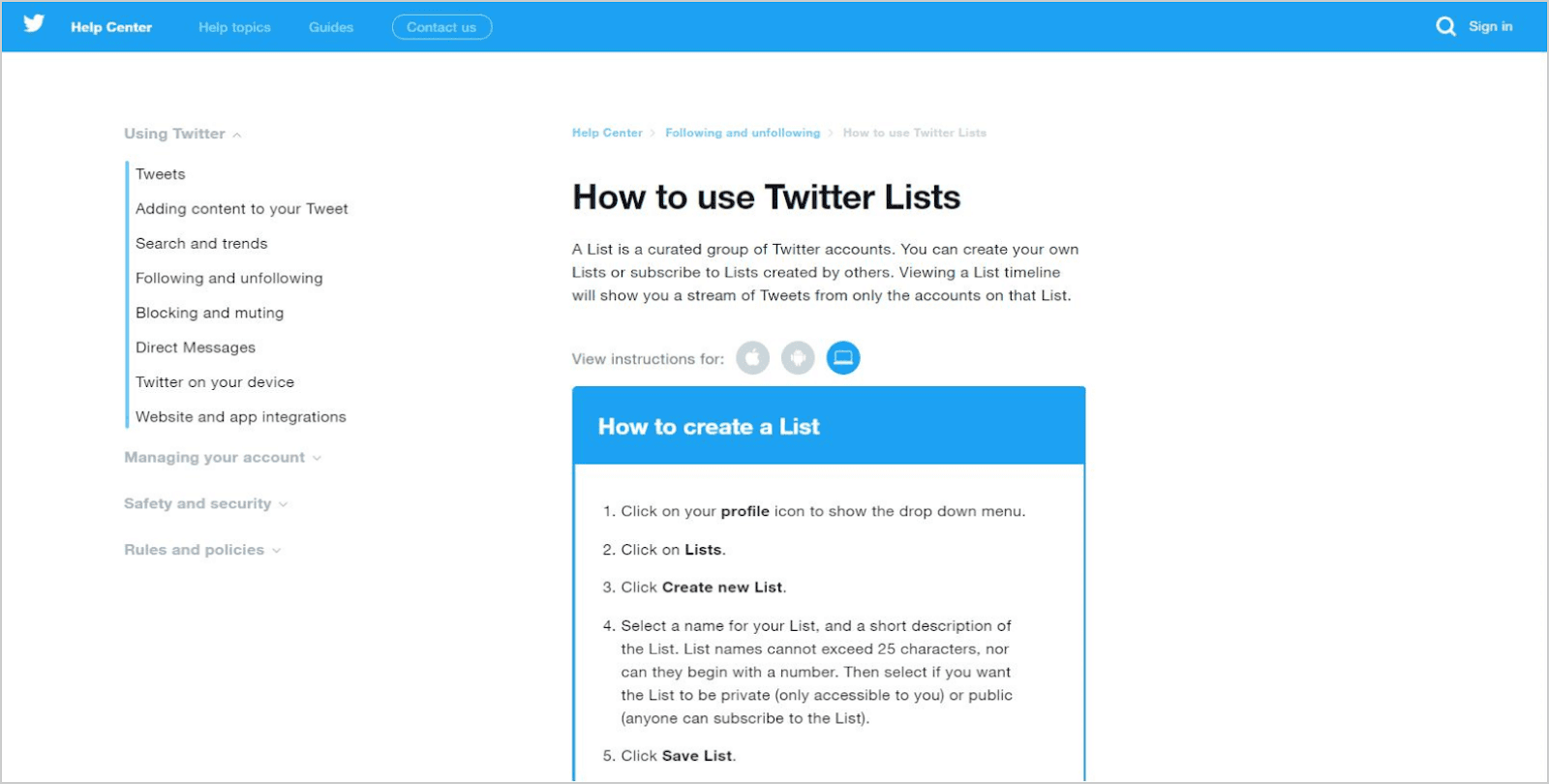
- LinkedIn Pulse – This is the LinkedIn’s form of customized newsfeed. It lets users see the best articles on LinkedIn and read the top news on the platform.

- Scientific Journals – A scientific journal is a periodical publication intended to further the progress of science, usually by reporting new research. Articles in scientific journals are mostly written by active scientists such as students, researchers, and professors instead of professional journalists.
Supplemental Sources of Content
To add to your trusted content sources, you can include additional content sources to your curation strategy, such as:
- RSS Feeds – RSS is a type of web feed which gives users access to updates of online content in a standardized, computer-readable format. Subscribing to a website RSS removes the need to manually check the desired website for new content. Instead, the browser constantly monitors the website and informs you of any updates.
- Email Newsletters – An email newsletter is a publication that is developed and distributed by companies and organizations. The newsletter content can vary, depending on the needs of the publisher and product promotions. But, almost always, an email newsletter contains quality content to curate from.
Related: [Infographic] 24 Fundamental Email Marketing Stats
3. Content Curation Process

After you’ve chosen your content topics and your sources, it is time to curate some content. The first step in the content curation process is estimating whether the content is valuable enough to capture the attention of your target audience. Here are some pointers that will help you evaluate your content:
- Does It Have Relevancy? – The content may be associated with your topics but, will your target audience learn something new from the content? Is there something that they don’t know yet and is that included in the curated content?
- Is the Content source credible? – Your content must come from a trusted industry source. Low-quality blogs and publications will make you look spammy and you will lose your audience’s attention.
- Does the Content Offer a Different Point of View? – You don’t have to only share content that reaffirms your and your audience’s beliefs. Encourage discussions by providing your audience with content that presents topics from a different angle.
- Is It Unique? – Your content must be fresh and has to provide your target audience with new information that they haven’t found anywhere else yet.
Grouping the Content on Your Site
Organizing your curated content on your website is a compelling way to bring the best content to the surface and to help your audience discover it. Let’s have a look at some of the best ways to group and organized the content on your website.
Grouping by Topic
Grouping is one of the easiest ways to organize your curated content. Websites such as Quora, Medium and Huffington Post are constructed with topic categories in mind. By giving the audience the possibility to select a topic of interest, they can jump to the exact content that they need. This can improve your page readability as a result.

Organizing by Content Type
You can also organize the curated content by type. When we speak about type, we think about blog posts, ebooks, case studies, videos, infographics etc.
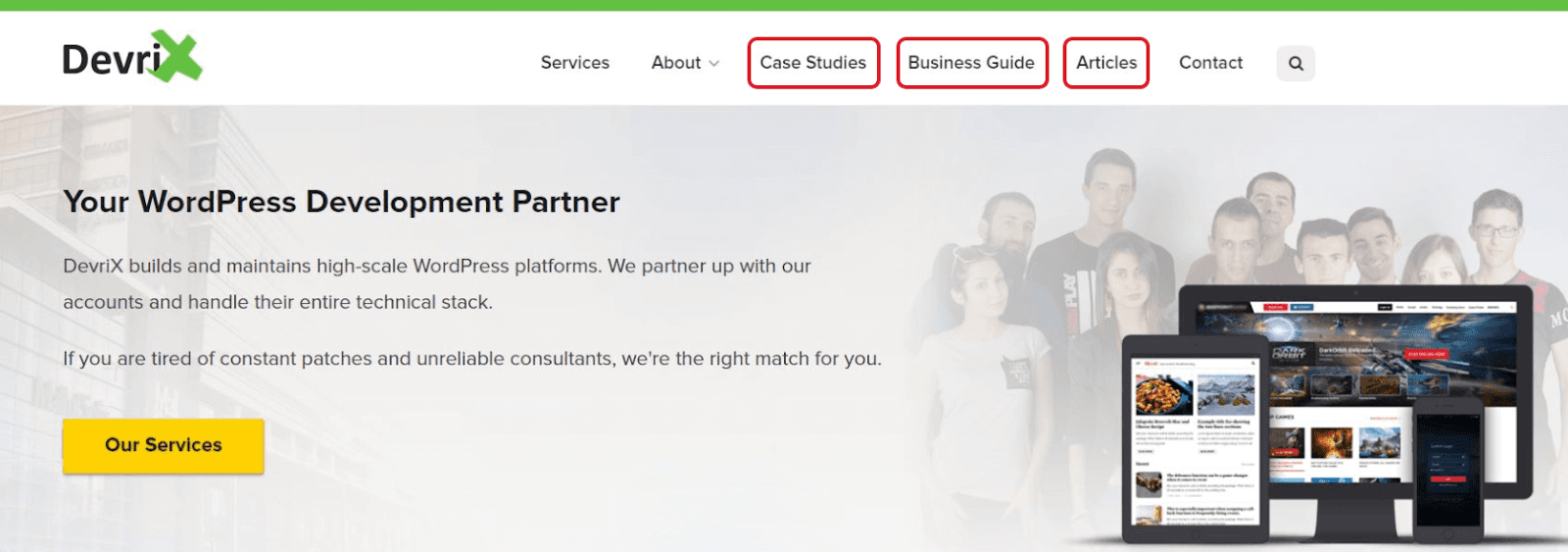
Grouping the Content by Length
Sometimes, your audience only has a 15-minute break. As much as your site is interesting, they don’t have the time to read a blog post that is over 5000 words long. Vice versa, your audience can have all the time in the world and can browse your website the entire day. That’s why it’s a smart strategy to group your content by length (time of reading).

4. Content Sharing
Finding and organizing the content is one thing, sharing the content is another story. Sharing is where the curated content role in marketing begins. You will have to decide which mediums are best to share the curated content and which channels are more suitable for your target audience.
Website or Publishing Platform
Dedicating a page of your website can sometimes act as an integrated microsite within your website that is filled mostly with curated content. For these types of websites, curated content can become the main feature and the centerpiece of the entire experience, which can make you the go-to resource for specific topics and problem-solving.
Done well, a dedicated website comprised of curated content can work even better than creating original content. Just check out Digg and BuzzFeed and you will see exactly what we mean.
When you share curated content on your website, remember the following rules:
- Customize – You can always edit the title to make it more suitable for your target audience. You can even replace the featured image of the article with your own. Use sites like Canva or Pixabay to find and create free images for your posts.
- Add Your Own Comment – In your post, include a short summary of the content. Tell the audience why you decided to include that article in your publication. Every additional opinion and information matter here.
- Link Back to the Original Content – You curate, you don’t create. So, make sure you credit the original authors and their websites within your publication. Add a call-to-action for your readers to click on if they want to learn more.
Email Newsletter
Email marketing can help your business by sharing thought leadership about your brand and products to a selected group of people. This demands content, and creating new content is not an easy task. So, how can businesses come up with content that they can distribute to their email subscribers?
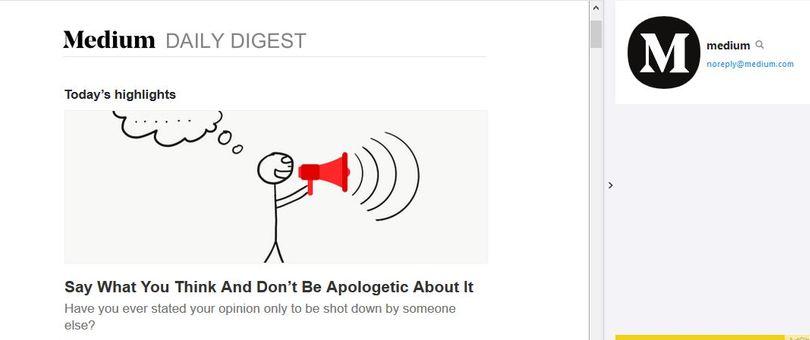
The answer to these questions is content curation. A curated email newsletter needs to offer the best material to the target audience, along with a brief summary of each article in the newsletter. This is an excellent chance to offer your target clients personalized content material that is hand-picked for them.
Social Media
Your social media strategy needs a steady flow of informative and industry-related content. Your Twitter profile alone should have at least 15 tweets per day. This means that you need to have at least 15 different pieces of content to share with your followers.

If you want to increase your social media followers and spark engagement on your profiles, curated content is a great way to do it. The consistent sharing of valuable content will make the audience see you as the main source that they can tune into when they need to educate themselves about the industry.
Related: 15 Social Media Profiles that Will Inspire You to Step Up Your Content
Facebook and LinkedIn
When you share curated content on your Facebook and LinkedIn pages, you need to edit the article’s title as much as possible. Any additional summary and opinions that can make people click on the link and spark conversations are more than welcome.
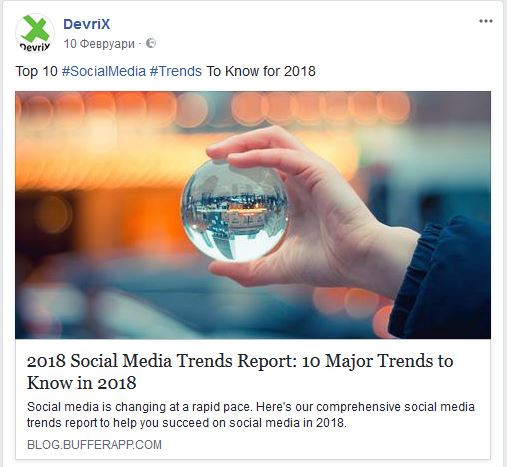
If you don’t want to just share the content on your feed, you can be extra unique with your curation approach and turn the curated article into a Facebook Instant Article.
Instant Articles is a mobile publishing format that allows news publishers to distribute articles to Facebook’s app. These articles can load and display 10 times faster than standard mobile web articles.
Instant Articles provide a faster, Facebook-native way to distribute the content that publishers already produce for their own websites. Every article published as an Instant Article must be published on a news publisher’s website as well. That means when someone shares an Instant Article by email or on Twitter, they also share a link to the publisher’s website. Before you decide to turn your curated content into an Instant Article, you will need to follow the Facebook’s Instant Articles rules and design guidelines.
LinkedIn also announced their own version of Instant Articles too, and it’s never a bad time for your business to capitalize on the trend and reach a new audience with your own or curated content.
Twitter’s 280 character limit means that you have to be creative when you share curated content on the platform. Concise and to the point headlines yield the best engagement rate here. Aim to keep your posts shorter to let people that retweet and comment about you to put in their own 2 cents.
Also, we recommend you to shorten the URL of the link. This will make your Tweet post more attractive and will save you a lot of characters. You can use the Google URL Shortener for this purpose.
When you share curated content on Twitter, don’t forget to tag the original author’s handle in the tweet. This will elicit them to retweet your post to their followers, and by doing that, you can instantly increase your audience. When you retweet content from another account, make sure that you’re sharing something that is relevant and that adds value.

5. Measuring Content Curation Success
After you’ve shared your content on your channels, it’s time to measure the success of your curation efforts. Measuring content curation ROI can be a challenging task, considering the fact that you rely on someone else’s content instead of your own. So, how can you be sure that your readers and followers appreciate the fact that you share valuable articles with them?
Let’s have a look at some of the metrics that can help you track your content curation success.
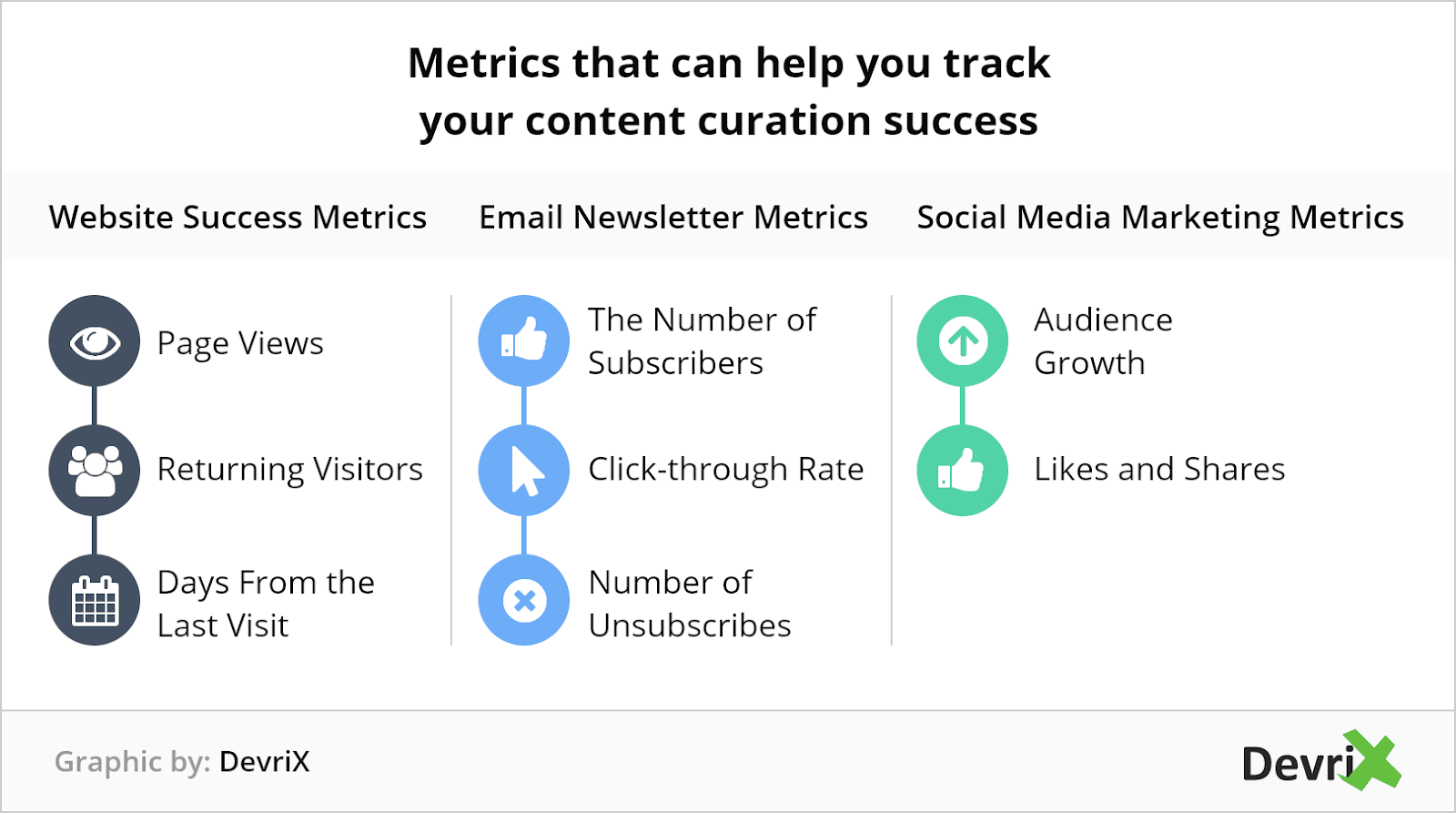
Website Success Metrics
These are the metrics that you need to keep an eye on when you curate content on your website/blog:
- Page Views – You can keep track of your page views and visitor growth with Google Analytics. When you compare the page views for your original content and the curated content, you will get a better idea of what the audience is interested in.
- Returning Visitors – It’s important to capture first-time visitors but, it’s even more important to have visitors that return to your site. When a reader returns to a page with curated content, it means that you’ve become a trusted source for that particular topic.
- Days From the Last Visit – Pages with curated content are frequently updated, and this makes people want to come back to see what’s new on the page. By tracking the number of days since a user’s last visit, you can identify how many readers return to your page per week or per month.
Email Newsletter Metrics
So far, you’ve learned that email marketing is another excellent way to share your curated content. The following metrics will help you measure how that content is received in your newsletter:
- The Number of Subscribers – Growth of email subscribers can show you that your website visitors love your content and want to see more of it. So, make sure that you have a subscriber form on your website where users can sign up.
- Click-through Rate – This is the biggest indicator of a newsletter’s success and content relevancy. A big click-through rate means that your subscribers acknowledge the content. Low click-through rates can mean that your content is not valuable enough or that the subscriber just scans the email.
- Number of Unsubscribes – Increased number of unsubscribes means that your content is not valuable enough to your readers. Maybe it’s due to the frequency of your newsletter or your topics. Make sure that the content is relevant and offers additional value to your subscribers.
Social Media Marketing Metrics
You need to keep track of your social media posts’ success for your own content and the content that you curate too. Many of the platforms have their own analytics tools, such as Facebook Page Insights, Twitter Analytics, and LinkedIn Company Page Analytics to help you track the metrics for your social media posts:
- Audience Growth – When you share your curated content, it’s important to keep track whether your audience increases or not. An increased number of fans and followers can mean that your posts are impressionable. This can lead to even more followers and email subscribers.
- Likes and Shares – Likes and shares are another key metrics used to measure your social media posts. To test whether your posts get more likes when you post directly from the curated website or by shortening the URL to open up more space for a CTA (call to action).
Wrapping up
As you can see, content curation is much more than just sharing someone else’s content. Complemented with your content marketing strategy, curation can produce unlimited results with your target audience.
This strategy will never be able to replace original, high-quality content that you’ve carefully created for your target audience. But, with content curation, you will find the most relevant content in your industry and present it to your audience. In turn, you and your business will become a knowledgeable and trusted source that provides the most useful information to the marketplace.
As a result, you will build your brand awareness, become a thought leader and gain credibility thanks to your target audience.




